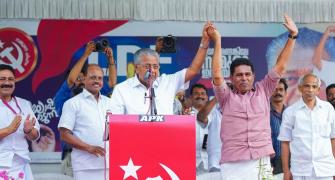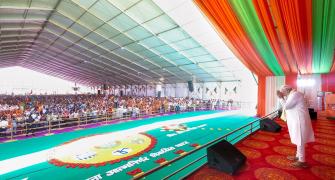Will Subhash Chandra rescue domestic cricket with his breakaway Indian Cricket League? After a fortnight of unalloyed bad news for Indian cricket fans, Tuesday's announcement certainly raises such expectations--despite the somewhat sour response from the Board for Control of Cricket in India (BCCI).
There is no doubt that the Indian cricket business is sorely in need of restructuring. Chandra has spotted the two basic (and related) problems that plague domestic cricket: one, the lack of investment in basic infrastructure, and, two, the absence of a viable, competitive market for talent.
The first is a curious anomaly in a country that is certifiably cricket-mad and boasts one of the world's richest administrations. The second partly explains why India's cricketing administration is so politicised and, therefore, so inefficient at producing consistent quality and performance. In fact, at a time when Indian agriculture is in crisis, should our minister for agriculture be focusing his attentions on an 11-man entertainment venture like cricket?
The Indian cricket industry is a bit like Indian business in the licence raj days. It is a state monopoly that thrives on limited competition and high entry barriers in a growing market.
The limited competition stems from the monopsonistic nature of the business. The state is the sole buyer of cricketing talent for the major domestic tournaments, whether Ranji, Duleep or Irani. This seriously narrows the options for cricketers who play club-level tournaments.
Why is this important? Because clubs provide the nurseries for talent in any field sport anywhere in the world. They create the rich pools of talent--both journeymen and stars--that nurtures the growth of the industry. In India, they play a minor role in the development of the game in sharp contrast, say, to European soccer or baseball and football leagues in the US.
True, the big local Mumbai tournaments like the Kanga League, the Times Shield or the Shivaji Park competitions and Kolkata maidan tournaments like the J C Mukherjee Trophy attract surprisingly fanatic following and some amount of corporate interest. In Mumbai, the Mahindras, ONGC, the Mafatlals and the Tatas have been financing teams for years.
But in the absence of a vibrant market for talent, the support is rarely enough to sustain cricket as a full-time career. Most players have nominal low-paying jobs in private and government companies, (the stalwarts being the Railways, Fertiliser Corporation and State Bank and its subsidiaries).
In fact, in the days before economic liberalisation, the public sector and some monopolist private sector companies literally subsidised the game in this way.
On the Kolkata maidan, office peons did the rounds of the clubs once a month with the office register for these "employees" to register their "attendance" at the office. If they hadn't made it to the state or national teams, many of these "employees" found themselves at a dead end when their all-too-short cricketing careers were over.
The fact is that India lacks a cadre of truly professional cricketers--those who make a full-time living from the playing the game as they do in the West-- outside of the Indian team. This is a critical gap because many local cricketers can hardly be described as affluent. Few can afford enough whites to last the season, let alone the working expense of a full cricket kit.
If the average fan wonders why Indian cricketers display such a voracious appetite for advertising contracts, the answer lies here. In a career that is circumscribed by age in any case, being in the national team is the only chance to earn money.
Compounding this is the abysmal investments that the BCCI and its affiliate bodies make in cricketing infrastructure, whether for the cricketers or the fans. For those playing the big national tournaments, the facilities continue to be sub-standard--even down to diet and accommodation.
And though the national cricketing administration, cash-rich from its sole control over advertising rights, has started grudgingly improving facilities, India still lacks a truly world-class cricket stadium (even much-praised Mohali doesn't make the cut). This, though India is the world's fastest-growing market for cricket.
Chandra's Rs 100-crore kitty suggests that he is unlikely to keep the pursestrings tied too tightly, in rewarding players and spending on infrastructure.
What Chandra's league may achieve on a smaller scale is what Manmohan Singh did for the Indian economy: Create a more open market and raise the bar by introducing global competition.
It may be premature to suggest, as the media has done, that Chandra's cricket league will do to what the late Kerry Packer famously achieved in 1977. But as a small step towards reforming the current state of Indian cricket, he would have done fans a signal service.








